 EUR/USD: Who Controls the Financial Market
EUR/USD: Who Controls the Financial Market
It is clear that interest rates rule the markets, not only in terms of actual changes but also regarding expectations about the timing and magnitude of future changes. From spring 2022 to mid-2023, the focus was on raising rates; now, the expectation has shifted towards their reduction. Traders are still uncertain about the Federal Reserve's decisions and timing, leading them to scrutinize macroeconomic statistics primarily for their impact on the likelihood of monetary policy easing by the regulator.
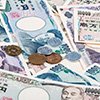 EUR/USD: Awaiting a Turbulent Week
EUR/USD: Awaiting a Turbulent Week
Recall that Monday, 27 May was a holiday in the US. However, on Tuesday, dollar bulls took control, and the DXY Index started to rise, bolstered by a significant increase in the US Consumer Confidence Index (from 97.5 to 102.0 against a forecast of 96.0). Consequently, EUR/USD moved southward.
 EUR/USD: The Battle of Europe and US PMIs
EUR/USD: The Battle of Europe and US PMIs
Overall, the past week favoured the dollar, but the advantage over the European currency was minimal. If you look at where the EUR/USD pair was on 15 May, it returned to this zone on 24 May, regaining the losses of recent days. Recall that the report from the US Bureau of Labor Statistics (BLS) released on 15 May showed that the Consumer Price Index (CPI) decreased from 0.4% to 0.3% month-on-month (m/m), against a forecast of 0.4%. On an annual basis, inflation also fell from 3.5% to 3.4%. Retail sales volume demonstrated an even more significant decline, from 0.6% to 0.0% month-on-month (forecast 0.4%). These data indicated that inflation in the country, though resistant in certain areas, is still on the decline. At that moment, there were renewed discussions in the market about a possible rate cut by the Fed as early as this autumn. As a result, the Dollar Index (DXY) went down, and EUR/USD went up. Stock indices S&P 500 and Nasdaq reached record highs.
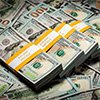 EUR/USD: Weak Inflation = Weak USD
EUR/USD: Weak Inflation = Weak USD
The American currency suffered two significant blows last week. Although these were not knockdowns, let alone knockouts, these minor shocks pushed the DXY Dollar Index down from 105.26 to 104.20 points, and EUR/USD up from 1.0766 to 1.0895.
 EUR/USD: Medium-Term Outlook Favours the Dollar
EUR/USD: Medium-Term Outlook Favours the Dollar
Throughout the past week, EUR/USD exhibited mixed dynamics, primarily driven by expectations concerning potential interest rate cuts by the US Federal Reserve (Fed) and the European Central Bank (ECB). Statements by officials from both central banks, as well as economic macro-statistics, either heightened or lowered these expectations.
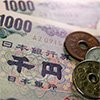 EUR/USD: What's Wrong with the US Soft Landing?
EUR/USD: What's Wrong with the US Soft Landing?
The headline of our last review stated that inflation remains stubborn, and the US GDP is slowing. Newly arrived data have only confirmed these assertions. A crucial inflation measure that the Federal Reserve follows – the Personal Consumption Expenditures Price Index (PCE) – increased from 2.5% to 2.7% in March. The ISM Manufacturing Sector PMI surpassed the critical level of 50.0 points, dropping from 50.3 to 49.2 points. It is important to remember that the 50.0 threshold separates economic growth from contraction. In such circumstances, neither raising nor lowering the interest rate is advisable, which is exactly what the FOMC (Federal Open Market Committee) of the US Federal Reserve decided. At its meeting on Wednesday, 01 May, the committee members unanimously left the rate unchanged at 5.50%, marking the highest rate in 23 years and unchanged for the sixth consecutive meeting.
 EUR/USD: Inflation Persists, US GDP Growth Slows
EUR/USD: Inflation Persists, US GDP Growth Slows
The US economy remains the most powerful on the planet. Moreover, its share of global GDP has reached a nearly two-decade high of 26.3%. According to the IMF, from 2018, the European Union's share decreased by 1.4%, Japan's by 2.1%, while the United States increased by 2.3%. China's GDP is 64% of the American figure, down from 67% five years ago. As a result, the dollar remains the undisputed leader among G10 currencies, with no contenders for its throne in the foreseeable future. The strength of the national economy, coupled with a robust labour market, allows the Federal Reserve to focus on combating inflation, aiming to reduce it to the target 2.0%. According to Jerome Powell, head of the US Central Bank, easing monetary policy under current conditions would have far more negative consequences for the economy than maintaining it tight over a long period. Against this backdrop, the likelihood of a dollar interest rate cut at the Fed's June meeting, according to the FedWatch Tool, fell to 15%. Market participants believe that, at best, a decision to change the current policy may be taken in September. Some economists, including analysts from Morgan Stanley and Societe Generale, even suggest that the Fed may delay the first rate cut until early 2025. Such forecasts led to the US currency rising to five-month highs in mid-April against the euro, British pound, Australian, and New Zealand dollars, with USD/JPY once again reaching a 34-year price record and the DXY index climbing to 106.42.
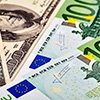 EUR/USD: A Pause After the Rally
EUR/USD: A Pause After the Rally
Last week, 60% of analysts adopted a neutral stance in their previous forecast and were proven absolutely correct. EUR/USD had a calm week, even boring at times, moving along the 1.0650 mark within the narrow corridor of 1.0600-1.0690. Market participants were recuperating from the rally of the preceding days, with dollar bulls counting profits and bears licking their wounds. The American currency reached five-month highs against the euro, British pound, Australian, and New Zealand dollars, while USD/JPY once again set a 34-year price record, and the DXY index climbed to 106.42.
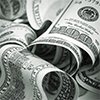 EUR/USD: The Dollar Soars
EUR/USD: The Dollar Soars
Last week saw two significant events: the first shocked market participants, while the second passed without surprises. Let's examine the details in order.
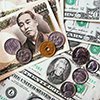 EUR/USD: The Dollar Weakness Puzzle
EUR/USD: The Dollar Weakness Puzzle
What transpired with the EUR/USD pair last week? It behaved as expected on Monday, 01 April. However, starting from Tuesday, the situation deviated. Let's delve into the details. On the first day of April, data on business activity in the US industrial sector from the ISM for March showed the economy is on the rise: PMI increased from 47.8 to 50.3 points, crossing the 50-point threshold that separates growth from contraction. This marked the end of a downward trend lasting over 15 months. With this sector accounting for over 10% of the US GDP, the PMI growth is a vital indicator of an economy that easily withstands high interest rates. Thus, logically, this data benefited the dollar, pushing the pair to 1.0730 - its lowest since 15 February. The escalation of tensions in the Middle East also supported the strengthening of the American currency as a safe haven.
 EUR/USD: Switzerland Strengthens the Dollar
EUR/USD: Switzerland Strengthens the Dollar
The key event of the past week was undoubtedly the FOMC (Federal Open Market Committee) meeting of the US Federal Reserve on March 20. As expected, the American Central Bank unanimously decided to maintain the key interest rate at its highest level in 23 years, 5.50%, for the fifth consecutive meeting. Since the rate was anticipated, market participants were significantly more interested in the comments and forecasts of the Fed's leadership. The most important statement came from the head of the regulator, Jerome Powell, who mentioned the consideration of three stages of borrowing cost reduction this year, totalling 75 basis points (bps). The long-term rate forecast was raised from 2.50% to 2.60%.
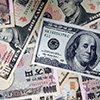 EUR/USD: Stubborn Inflation Refuses to Back Down
EUR/USD: Stubborn Inflation Refuses to Back Down
Market participants last week were keenly focused on inflation data from the US. The FOMC (Federal Open Market Committee) meeting of the Federal Reserve is scheduled for Wednesday, 20 March, and these figures will undoubtedly influence the Committee's decision on interest rates. Federal Reserve Chairman Jerome Powell recently stated that more evidence of a sustainable slowdown in inflation would be necessary to start cutting rates. However, it appears that such evidence is lacking. Data released on Tuesday, 12 March, showed that prices, instead of decreasing, have been on the rise.
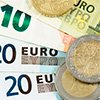 EUR/USD: A Bad Week for the Dollar
EUR/USD: A Bad Week for the Dollar
The past week was dominated by the European Central Bank (ECB)'s meeting on Thursday, 7 March. As anticipated, the pan-European regulator decided to maintain its current monetary policy, leaving the interest rate unchanged at 4.50%. This move reaffirmed its commitment to steering inflation into the desired range. The ECB aims to be absolutely certain that inflation is consistently moving towards its 2.0% target, which currently stands at 2.6%.
 EUR/USD: Weak Bulls vs. Weak Bears
EUR/USD: Weak Bulls vs. Weak Bears
Throughout the past week, EUR/USD has been trading within a narrow channel. News favouring the euro pushed it towards the resistance level at 1.0865, while positive developments for the dollar brought it back to the support level at 1.0800. However, neither the bulls nor the bears had enough strength to break through these defence lines.
 EUR/USD: ECB Rhetoric Against the Dollar
EUR/USD: ECB Rhetoric Against the Dollar
Data on consumer inflation (CPI) in the US, published on February 13, exceeded expectations. The Producer Price Index (PPI) also indicated a rise in industrial inflation in the country. However, despite this, the American currency failed to gain additional support. The Dollar Index (DXY) began to decline from February 14, while EUR/USD steadily climbed higher.
 EUR/USD: A Week of Mixed Data
EUR/USD: A Week of Mixed Data
The macroeconomic statistics released last week were mixed in both the United States and the Eurozone. As a result, EUR/USD failed to break through either the 1.0700 support or the 1.0800 resistance, continuing to move within a narrow sideways channel.
 EUR/USD: Dollar Dips but Promises a Rebound
EUR/USD: Dollar Dips but Promises a Rebound
Last week saw a scarcity of significant macroeconomic data. In anticipation of new drivers, market participants analysed the state of the US labour market and statements from Federal Reserve officials.
 EUR/USD: Dollar Strengthening Prospects Increase
EUR/USD: Dollar Strengthening Prospects Increase
Throughout January, a series of indicators: GDP, employment, and retail sales, consistently highlighted the strength of the US economy. The threat of recession diminished, and it became evident that the high interest rate did not significantly hinder economic performance. Market participants were keenly awaiting the Federal Open Market Committee (FOMC) meeting of the US Federal Reserve, scheduled for Wednesday, January 31, against the backdrop of these positive economic indicators.
 EUR/USD: US Economy Delivers Surprises
EUR/USD: US Economy Delivers Surprises
The two most significant events last week occurred on Thursday, January 25. On this day, the European Central Bank (ECB) held a meeting, and preliminary GDP data for the US for Q4 2023 was published.
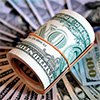 EUR/USD: Reasons Behind the Dollar's Strengthening
EUR/USD: Reasons Behind the Dollar's Strengthening
The past week was notably sparse in terms of macroeconomic statistics. Consequently, the market participants' sentiment largely depended on the statements made at the World Economic Forum in Davos (WEF). It's worth noting that this event, held annually at a ski resort in Switzerland, gathers representatives of the global elite from over 120 countries. There, amidst the sparkling, crystal-clear snow glistening in the sunlight, the world's power players discuss economic issues and international politics. This year, the 54th edition of the forum took place from January 15 to 19.
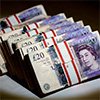 EUR/USD: Market Anticipates Federal Reserve Rate Cut
EUR/USD: Market Anticipates Federal Reserve Rate Cut
We published our global forecast for EUR/USD for the upcoming year in the last week of 2023. Now, moving from long-term projections, we return to our traditional weekly reviews, which have been conducted by the NordFX analytical group for over a decade.
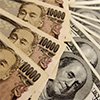 According to statistics, USD/JPY (US Dollar/Japanese Yen) is among the top three most traded currency pairs in the Forex market. This is facilitated by the pair's high liquidity, which ensures narrow spreads and favourable trading conditions. This means that traders can enter and exit positions with minimal costs. Additionally, the pair exhibits very high volatility, providing excellent profit opportunities, particularly in short-term and medium-term operations.
According to statistics, USD/JPY (US Dollar/Japanese Yen) is among the top three most traded currency pairs in the Forex market. This is facilitated by the pair's high liquidity, which ensures narrow spreads and favourable trading conditions. This means that traders can enter and exit positions with minimal costs. Additionally, the pair exhibits very high volatility, providing excellent profit opportunities, particularly in short-term and medium-term operations.
 The main question, just a few years ago, was when the crypto bubble would burst. Over time, bitcoin gradually earned its place in the minds and portfolios of traders and investors. Competing actively with physical gold and other investment and defensive assets, digital gold emerged as a formidable contender.
The main question, just a few years ago, was when the crypto bubble would burst. Over time, bitcoin gradually earned its place in the minds and portfolios of traders and investors. Competing actively with physical gold and other investment and defensive assets, digital gold emerged as a formidable contender.
 Traditionally, we publish currency forecasts from leading global financial institutions at the turn of the outgoing and incoming years. Having maintained this practice for several years, it enables us to not only peer into the future but also to reflect on past predictions by experts and evaluate their accuracy.
Traditionally, we publish currency forecasts from leading global financial institutions at the turn of the outgoing and incoming years. Having maintained this practice for several years, it enables us to not only peer into the future but also to reflect on past predictions by experts and evaluate their accuracy.
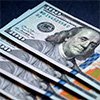 EUR/USD: Dovish Fed Reversal
EUR/USD: Dovish Fed Reversal
The fate of EUR/USD was determined by two events last week: the FOMC (Federal Open Market Committee) meeting of the US Federal Reserve and the meeting of the Governing Council of the European Central Bank (ECB), which took place a day later. As a result, the euro emerged victorious: for the first time since November 29, the pair rose above 1.1000.
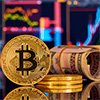 EUR/USD: Continuation of the Rate War
EUR/USD: Continuation of the Rate War
The labour market and inflation: these are the factors that Central Banks closely monitor when making decisions regarding monetary policy and interest rates. It is sufficient to recall the significant shift that occurred after the publication of October's inflation data in the United States. In November, the dollar weakened significantly, and the classical portfolio of stocks and bonds yielded the highest profit in 30 years! EUR/USD, starting at 1.0516, reached a monthly peak on November 29 at 1.1016.
 EUR/USD: December – A Formidable Month for the Dollar
EUR/USD: December – A Formidable Month for the Dollar
Who will start loosening the grip on their monetary policies earlier, the Federal Reserve (FRS) or the European Central Bank (ECB)? The discussion on this topic remains active, as clearly seen in the quotes' charts. The statistics from the past week did not allow EUR/USD to solidify above the significant level of 1.1000. It all began on Wednesday, November 29, with the publication of inflation data in Germany. The preliminary Consumer Price Index (CPI) in annual terms amounted to 3.2%, which is lower than both the forecast of 3.5% and the previous value of 3.8%. In monthly terms, the German CPI went even deeper into the negative territory, reaching -0.4% (against a forecast of -0.2% and 0.0% the previous month).
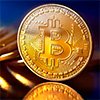 EUR/USD: Day of Thanksgiving and Week of Contradictions
EUR/USD: Day of Thanksgiving and Week of Contradictions
Reminder that the American currency came under significant pressure on November 14 following the release of the Consumer Price Index (CPI) report in the USA. In October, the Consumer Price Index (CPI) decreased from 0.4% to 0% (m/m), and on an annual basis, it dropped from 3.7% to 3.2%. The Core CPI for the same period decreased from 4.1% to 4.0%: reaching the lowest level since September 2021. These figures caused a tumble in the Dollar Index (DXY) from 105.75 to 103.84. According to Bank of America, this marked the most significant dollar sell-off since the beginning of the year. Naturally, this had an impact on the dynamics of the EUR/USD pair, which marked this day with an impressive bullish candle of almost 200 pips, reaching resistance in the 1.0900 zone.
 EUR/USD: November 14 - a Dark Day for the Dollar
EUR/USD: November 14 - a Dark Day for the Dollar
In the previous review, the overwhelming majority of experts expressed opinions favouring further weakening of the American currency. This prediction came to fruition. The Consumer Inflation report in the United States, published on Tuesday, November 14, toppled the Dollar Index (DXY) from 105.75 to 103.84. According to Bank of America, this marked the most significant dollar sell-off since the beginning of the year. Naturally, this had an impact, including on the dynamics of EUR/USD, which marked this day with an impressive bullish candle, rising nearly 200 points.
 EUR/USD: How Mr. Powell Aided the Dollar
EUR/USD: How Mr. Powell Aided the Dollar
The past week witnessed few significant events, which reflected in EUR/USD pair's fluctuations around 1.0700. Notably, there was a slight increase in the Dollar Index (DXY), starting at 105.05 and reaching a peak of 105.97 by Friday, November 10. This growth was primarily attributed to the "hawkish" comments made by the Chair of the Federal Reserve.